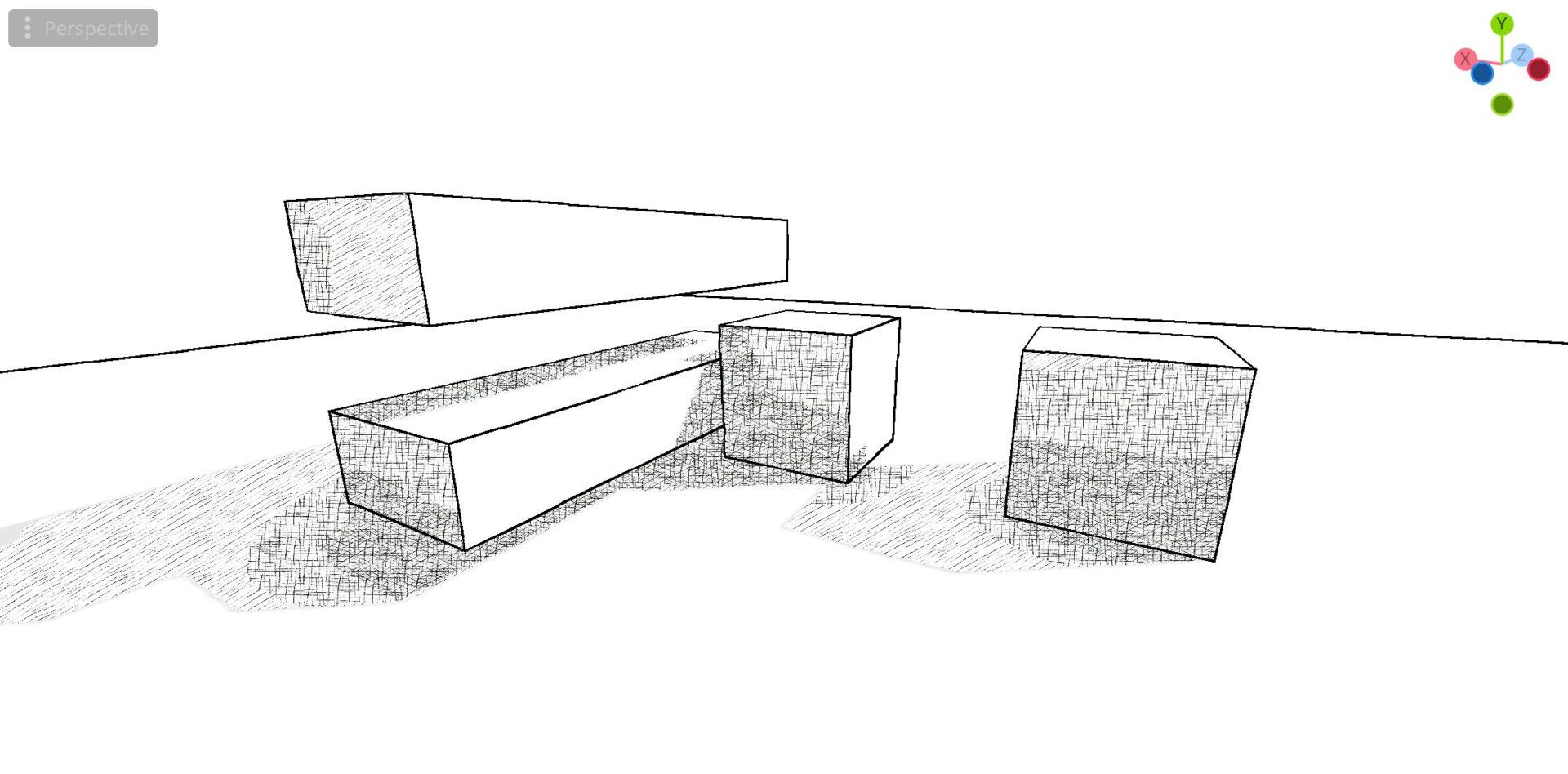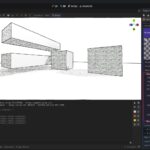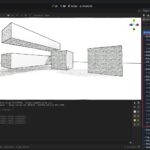Mobius Outline + Hatching
I saw tlaverne covered this already and this is my version.
Original Video:Moebius-style 3D Rendering | Useless Game Dev – YouTube
Shader code
shader_type spatial;
render_mode unshaded,vertex_lighting;
uniform sampler2D depth_texture : hint_depth_texture,filter_linear_mipmap;
uniform sampler2D normal_texture : hint_normal_roughness_texture,filter_linear_mipmap;
uniform sampler2D screen_texture: hint_screen_texture,filter_linear_mipmap;
uniform vec3 edge_color : source_color = vec3(0.0, 0.0, 0.0);
uniform float edge_threshold: hint_range(0.001, 0.2, 0.001) = 0.01;
uniform sampler2D hatch1: filter_nearest,repeat_enable;
uniform sampler2D hatch2: filter_nearest,repeat_enable;
uniform sampler2D hatch3: filter_nearest,repeat_enable;
uniform float noise_frequency : hint_range(0.1, 20.0, 0.1)= 10.0 ;
uniform float noise_offset_intensity : hint_range(0.0, 0.2, 0.001) = 0.002;
vec2 hash(vec2 p) {
p = vec2(dot(p, vec2(127.1, 311.7)),
dot(p, vec2(269.5, 183.3)));
return -1.0 + 2.0 * fract(sin(p) * 43758.5453123);
}
vec2 fade(vec2 t) {
return t * t * t * (t * (t * 6.0 - 15.0) + 10.0);
}
float grad(vec2 hash, vec2 dir) {
vec2 grad_dir = vec2(hash.x * 2.0 - 1.0, hash.y * 2.0 - 1.0);
return dot(grad_dir, dir);
}
float perlin(vec2 pos) {
vec2 p = floor(pos);
vec2 f = fract(pos);
f = fade(f);
vec2 top_left = p;
vec2 top_right = p + vec2(1.0, 0.0);
vec2 bottom_left = p + vec2(0.0, 1.0);
vec2 bottom_right = p + vec2(1.0, 1.0);
float tl = grad(hash(top_left), f);
float tr = grad(hash(top_right), f - vec2(1.0, 0.0));
float bl = grad(hash(bottom_left), f - vec2(0.0, 1.0));
float br = grad(hash(bottom_right), f - vec2(1.0, 1.0));
float top = mix(tl, tr, f.x);
float bottom = mix(bl, br, f.x);
return mix(top, bottom, f.y);
}
void vertex(){
POSITION = vec4(VERTEX.xy,1.0,1.0);
}
void fragment() {
vec2 screen_uv = SCREEN_UV;
vec3 origin_color = texture(screen_texture,screen_uv).rgb;
// 获取当前位置的Perlin噪声值
vec2 noiseValue = vec2(perlin(screen_uv * noise_frequency), perlin((screen_uv + vec2(0.5, 0.5)) * noise_frequency)); // 10.0是频率,可以调整
// 使用噪声值偏移uv
vec2 uv = screen_uv + noiseValue * noise_offset_intensity; // 0.02是偏移强度,可以根据需要调整
float dx = 1.0 / VIEWPORT_SIZE.x;
float dy = 1.0 / VIEWPORT_SIZE.y;
mat3 Gx = mat3(
vec3(-1, -2, -1),
vec3( 0, 0, 0),
vec3( 1, 2, 1)
);
mat3 Gy = mat3(
vec3(-1, 0, 1),
vec3(-2, 0, 2),
vec3(-1, 0, 1)
);
float depthSobelX = 0.0;
float depthSobelY = 0.0;
float normalSobelX = 0.0;
float normalSobelY = 0.0;
for(int i = -1; i <= 1; i++) {
for(int j = -1; j <= 1; j++) {
float depth = texture(depth_texture, uv + vec2(float(i) * dx, float(j) * dy)).r;
vec3 normal = normalize(texture(normal_texture, uv + vec2(float(i) * dx, float(j) * dy)).rgb * 2.0 - 1.0);
depthSobelX += Gx[i+1][j+1] * depth;
depthSobelY += Gy[i+1][j+1] * depth;
normalSobelX += Gx[i+1][j+1] * normal.x;
normalSobelY += Gy[i+1][j+1] * normal.y;
}
}
float depthMagnitude = length(vec2(depthSobelX, depthSobelY));
float normalMagnitude = length(vec2(normalSobelX, normalSobelY));
// Combine the results
float magnitude = depthMagnitude + normalMagnitude;
// distort the hatching
vec3 normal_sample = normalize(texture(normal_texture, uv).rgb * 2.0 - 1.0);
vec2 distorted_uv = uv + normal_sample.xy * 2.0 ;
vec3 screen_color = texture(screen_texture,uv).rgb;
float luminance = dot(screen_color, vec3(0.299, 0.587, 0.114));
vec4 texture_color;
if (luminance < 0.6){
texture_color = texture(hatch3,distorted_uv * 20.0);
}
else if (luminance < 0.7){
texture_color = texture(hatch2,distorted_uv * 20.0);
}
else if (luminance < 0.8){
texture_color = texture(hatch1,distorted_uv * 20.0);
}
else{
texture_color = texture(screen_texture,uv);
}
if (magnitude > edge_threshold) {
ALBEDO = edge_color;
} else {
// 使用纹理颜色
ALBEDO = texture_color.rgb;
}
}








Thank you very much, it looks great on the pictures! but it doesn’t work for me, im applying it to a quad in front of the 3d camera but I can’t seem to increase the outline thickness and would like to know how to set up the hatches, please. And thank you
what’s your Godot Version? is it 4.3?